Centennial "Iron Army", where is "iron"
Author:Look at the think tank Time:2022.08.07


On the 70th anniversary of the founding of the People's Republic of China, the Banner's 100th Honor Banner was neatly arranged.
The battle flag is a lofty honor that the PLA unit can get. This hundreds of battle flags are a concentrated history of the PLA.
This year is the 95th anniversary of the founding army of the Chinese People's Liberation Army, and the watched think tank launched the#今 今 今#special series. The wonderful fighting story of heroiers such as preliminary heroes "and" sea tiger boats ".
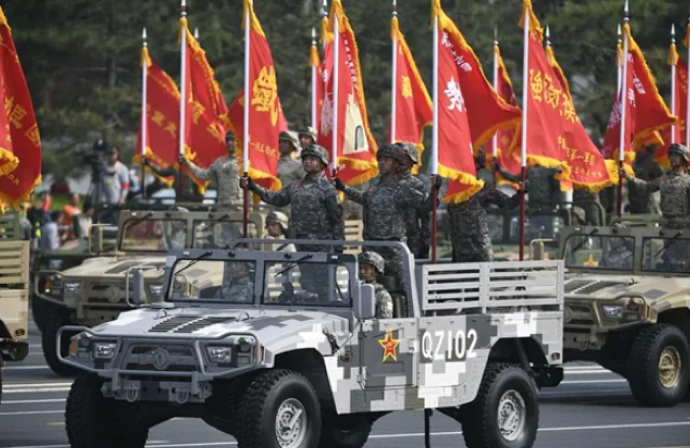
On the morning of October 1, 2019, the 70th anniversary of the establishment of the People's Republic of China was grandly held in Tiananmen Square, Beijing. This is the battle flag team. Picture source: Wang Peng | Xinhua News Agency
Today, we first come to know the first flag of the record of our army. It is also the only battle flag that was awarded by the public- "Iron Army" flag.
It was born in the Northern Expedition, and the funds were "respectful on January 5th of the Republic of China on January 5th." In the past century, what did the "Iron Army" do? "Ye Ting's Independence Group Song" gave the answer:
"The Northern Expedition shakes the sky with a thunder, the first shot of Nanchang City.
Jinggang Xinghuo grew up, and the Long March pioneers had thousands of battles.
Dadu Bridge flew to the danger, and the soldiers fell on the mouth of Lazi.
Before Pingxing, the enemy was lost, and the blood loyal soul Liu Laozhuang.
We are the heirs of the Iron Army, carrying our mission on our shoulders ... "
Text | Chen Hui Xinhua News Agency, former president and senior journalist of the Beijing Military Region Branch,
Edit | Xie Fang Watch Think Tank
This article is an original article on the lookout think tank. If you need to reprint, please indicate the source of the Source of the Source of the Think Tank (ZHCZYJ) and the author's information, otherwise it will strictly investigate the legal responsibility.
1
"Iron Army", the first formal armed leader led by our party
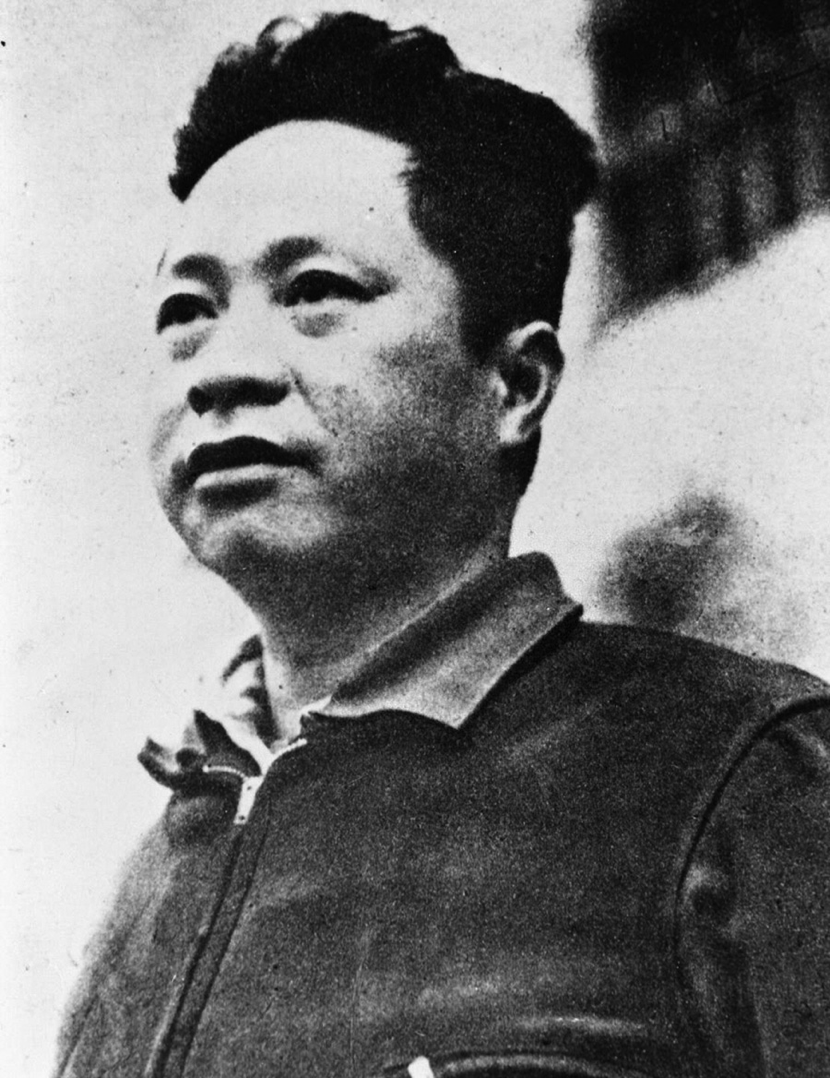
Ye is quite like. Figure | Xinhua News Agency
Ye Ting, formerly known as Ye asks, was born in a farmhouse in Huizhou, Guangdong in 1896. The enlightenment teacher Chen Jingru renamed "Ye Ting" for him, meaning "people must go up, Ye must be up", and there is a period of standing out and saving China Ji Ji Essence
Ye Ting attended the Guangdong Army Primary School, the Hubei Army Second Reserve School, and the Baoding Army Officer School in Hebei. In 1917, he published a long letter in "The New Youth" to express his will to "vibrate the world and be weak". In 1924, Ye Ting went to the Soviet Union to study, joined the Chinese Socialist Youth League in October of the same year, and joined the Communist Party of China in December.
At the same time, in February 1923, Chinese revolutionary pioneer Sun Yat -sen established a revolutionary regime in Guangzhou, and served as Marshal of the Navy. In October 1924, in view of the often harassed by warlords and bandits by railway transportation, Sun Yat -sen approved the establishment of the iron armored team of the Marshal of the Navy, referred to as the "Iron Armor". There are 3 rows of iron armored teams, 3 classes in each row, and a total of 163 people are compiled. Among them, the captain Xu Chengzhang, the party representative Liao Qianwu, the deputy captain Zhou Shidi, the military instructor Zhao Zixuan, and the political instructor Cao Ruqian were all Communist Party members, thereby setting up the Communist Party group.
It can be said that the iron armored team is a military force led by the Guangdong Communist Party of China, directly returned to the district party secretary Chen Yannian and the military minister Zhou Enlai. It is the initial practice and attempt of the Chinese Communist Party's absolute leadership system for the army.
In 1925, the Guangdong Revolutionary Government recruited the warlords Chen Jiongming, and the iron armored team participated in the battle. In June, Zhou Shidi led the Iron A team directly to the provincial and Hong Kong workers' strikes to support the May 30th Movement.
In the context of the Great Revolution, Zhou Enlai and others decided to build a revolutionary team directly led by the Communist Party, and the opportunity soon came.
In November 1925, the first independent brigade of the 4th Army of the National Revolutionary Army was expanded to the 12th Division of the 4th Army of the National Revolutionary Army.
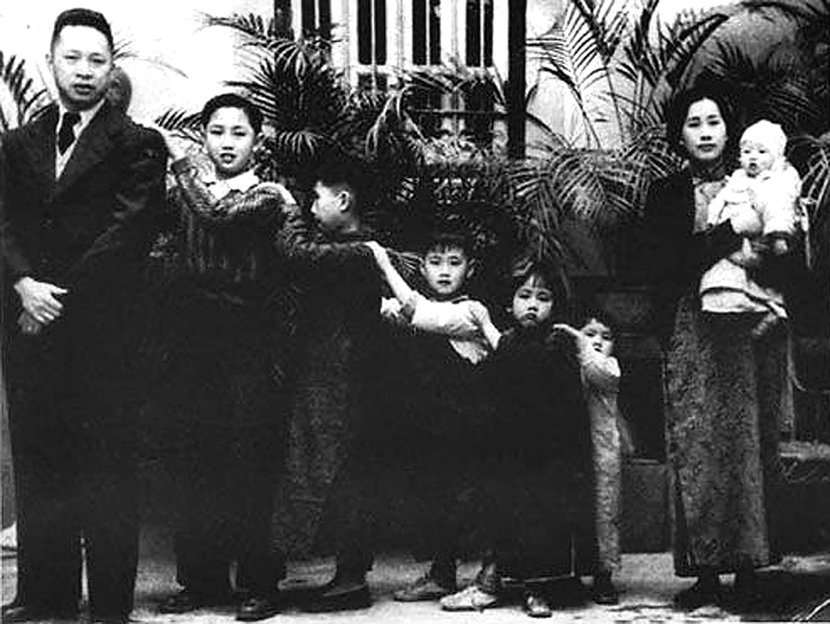
Ye Ting took a photo with his family. Figure | Xinhua News Agency
< /center>
At that time, Ye Ting had returned to China as the director of the 4th Army Staff. Li Jishen, commander of the 4th Army, knew that he was a Communist Party member. Out of his own interests, he was unwilling to be by his side, and said, "Give you a group, you go to fight in front." The head of the 34th regiment of the 4th Army, Chief of Staff of Zhou Shizhi, and the staff of the iron armored team are all remedied. The team members can serve as the squad leader.
In January 1926, the 12th Division conducted a rectification, merged all the unmied teams and advance teams into the new 34th regiment. The original 34th regiment was changed to the independent regiment. Ye Ting's independent group ".
Ye Ting's independent regiment was named the 4th Army of the National Revolutionary Army in name. In fact, the Communist Party of China was completely controlled. The head of the regiment, battalion and backbone were members of the Communist Party of China. This is also the first grass -roots party organization established by our party in the army. At the beginning of the party branch, there were about 20 party members, which did not belong to the 4th Army's Political Department, but belonged to the direct leadership of the Military Commission of the Guangdong and Guangxi District Party Committee of the Communist Party of China. Ask the report to report to Zhou Enlai. When Zhou Enlai was not in Guangzhou, he went directly to Chen Yannian.
After that, Ye Ting used the half -year time in Zhaoqing, Guangdong, to create an independent group with the Soviet Red Army model, initially established a political work system, implemented political education, and carried out the "anti -corruption, anti -scolding, anti -reporting leave" campaign. Habits have established the revolutionary thoughts of defeating warlords and down the imperialism, and established the spirit of "iron army" with "iron beliefs, iron will, iron unity, iron discipline, and iron style" as the core. In May 1926, Ye Ting's Independent Regiment was a advance team in the Northern Expedition. He went to the warfare front line of the warlords in the early days, and fought in Lutian in the first battle to win the opponent; then fighting Lingling and defeating the defendant; Like Pingjiang, and the enemy army fled. Next, he went straight to the Zhonghuopu, and he attacked Ting Siqiao to seize the city of Xianning.
On August 27, Ye Ting's independent regiment captured Xianning in one fell swoop, directly pounding in Hubei, cut off the Guangdong -Han and Han Railway, and approached the south of the E -South gate of Tingsiqiao. Wu Peifu hurriedly transferred the main force to go south, and according to the danger of death, he defended Ting Siqiao. Two days later, the independent regiment took the main main task of attack, and the He Shengqiao, who was defended by the main force of the 4th Army and the 7th Army, and the 7th Army. Although Wu Peifu personally supervised the battle, several brigade commanders and leaders of the regiment were suspended, and the avalanche -type retreat was still unable to stop the officers and soldiers.
On September 6, the Northern Expeditionary Army occupied Hanyang and occupied Hankou on the 7th. Wuchang became a solitary city and was surrounded by the Northern Expedition Army. Ye Ting's independent regiment faced the stubborn enemy of Jiancheng and organized the death team. Cao Yuan, the leader of the Communist Party member, led the team in person, crossed the city, raised the ladder, and forced the city head.
After 40 days of fierce battle, Ye Ting's independent regiment finally boarded Wuchang City and created the most brilliant record in the history of the Northern Expedition. 191 martyrs who sacrificed were buried at the foot of Hongshan. The tombstone was engraved with inscriptions such as "spiritual immortality", "flowers of martyrs", "the victim of the proletariat", and "the blood of the martyrs into the honor of the iron army". Permanent memorial.
In January 1927, the Cantonese group living in Wuhan deliberately cast an iron shield in Hanyang Arsenal to express the admiration of the people. The front of the shield is cast with two "Iron Army", and there are four words of praise engraved on the back:
"The blood of the martyrs, the flowers of doctrine, the great traces of the four armies, and the magnificent reverie;
Being able to obey discipline, can not be translated, can love the people, and save the country;
Destroyed and trapped, such as iron, revolutionary ambitions, such as iron shoulders;
If the function is iron, the people are leaning on, and they are willing to live like iron and remember for thousands of years. "
Citizens presented this shield to the 4th Army of the National Revolutionary Army, and Ye Ting was ordered to accept the shield. Since then, Ye Ting's independent group's "Iron Army" title is powerful. At that time, there were two slogans circulating in Ye Ting's independent group:
"The party is in the heart, the gun is in hand, and the iron army is following the party."
"The battle flag fluttered with the party flag, and the iron army iron heart followed the party."
2
Three major uprising, all of which are "Iron Army"
After the victory of the Northern Expedition, the National Revolutionary Army expanded. The former 4th Army and 12 Divisions were promoted to the 4th Army, and the 10th division was promoted to the 11th Army. The 4th Army and 25th Division adapted from Ye Ting's independent regiment. Among them, the main part of Ye Ting's independent regiment became the 73th regiment of the 25th Division.
On July 28, 2017, the former site of the General Headquarters of the Nanchang Uprising of August 1. Figure | Xinhua News Agency
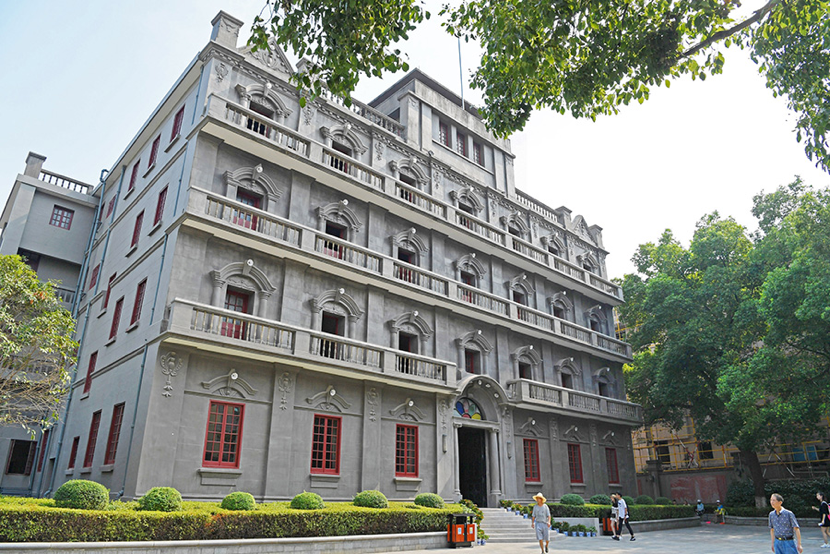
After the failure of the first KMT and the Communist Party, the Nanchang Uprising broke out, and the "Iron Army" and the backbones from them played three major role.
First, in the Nanchang Uprising, Ye Ting served as the former enemy commander and commander of the 11th Army, playing the core leadership role. In addition, Ye Ting commanded the 24th Division and 71 regiments of the 11th Army to start a fierce battle with the defendant in Catholic Church, Xinying House, Baihuazhou and other places to surrender the enemy.
The second is that during the expansion of the National Revolutionary Army, the backbone of the "Iron Army" fully communicated with the backbone of the "Iron Army", and the blood veins were covered with 24 divisions and 25 divisions. These troops constituted the backbone of the Nanchang Uprising.
Third, the "Iron Army" 73 regiment has always been firm in Nanchang Uprising.
The troops scheduled to participate in the Nanchang Uprising mainly include the army of the 4th Army of the National Revolutionary Army: the 24th and 10th Division of the 11th Army; the 25th Division of the 4th Army; the 20th Army; A total of more than 20,000 people with the security team of Nanchang Public Security Bureau.
Among them, the situation of the 25th Division is very special: the 73 regiment of Zhou Shi's head of the regiment is absolutely grasped to participate in the Nanchang Uprising, but Li Hanhun, the 25 division commander of his belonging, is Zhang Fakui's close confidence; One China is willing to uprising, but the group has just been formed, and the internal components are complicated. In addition, the action is very inconvenient to move; the 74th regiment may not mobilize at all because of the reaction of the head of the regiment. Communists can be mastered by our army. In addition, the 25th Division's station is close to the 12th Army and 12 Division, and the division is the troops started by Zhang Fakui. Once they find a change, they will come to obstruct.
To this end, Zhou Enlai and others decided that the 25th Division of the backbone force became a reserve team, and temporarily stayed in the area of Landmir Ridge. In order to avoid the enemy's discovery, other troops except the 73 regiment will not bring backpacks, luggage and food heavy, only carry weapons and ammunition, and leave the camp in the name of field exercises. On August 1st, the insurgents fought the first and overcome difficulties. After more than 4 hours of battle, they wiped out more than 3,000 defenders in Nanchang before dawn, seized more than 5,000 (tip), more than 700,000 rounds of bullets, and several cannons. In the early morning, the flag of the insurgents was high into Nanchang City.
In the afternoon of the same day, Zhou Enlai sent Nie Rongzhen to find a way to bring the 25th Division to Nanchang to respond to the uprising in the city. After Nie Rongzhen arrived, Zhou Shizi led the 73 regiment without hesitation. After the mobilized 75 regiments and 74 regiments, even the 74th regiment also announced the uprising.
Zhang Fakui, the commander of the 4th Army, heard the news and was frightened. He rushed to the Mahui Ridge Railway Station. He jumped down without stopping the car and shouted to the upcoming uprising team. You are commanded by President Zhang! "Zhang Fakui is an old man in the 25th division. If he shoots him, the team may be confused. When Nie Rongzhen saw this, he was in a hurry, and the guards shot Zhang Fakui to the sky. As soon as the gunshot sounded, Zhang Fakui boarded the car immediately and scared away.
In the end, Nie Rongzhen successfully brought most of the 25 divisions of the 73 regiment to Nanchang, supporting the uprising in Nanchang City.
On September 18, 1927, the Nanchang Uprising Army transferred to Dapu County and decided to divide the first troops for the first time. The next day, Zhou Enlai, He Long, Ye Ting, and other leaders of the uprising moved down to Chaoshan to Hailufeng. It has an important role.
< /center>
Jinggangshan Memorial Monument (Information Photo). Figure | Xinhua News Agency
Since then, the main force of the insurgents defeats Chaozhou. Under the leadership of Zhu De and Chen Yi, the 73 regiment and other regiment moved to the side of the Fujian, Guangdong, and Jiangxi. In the end, there were only more than 800 people left.
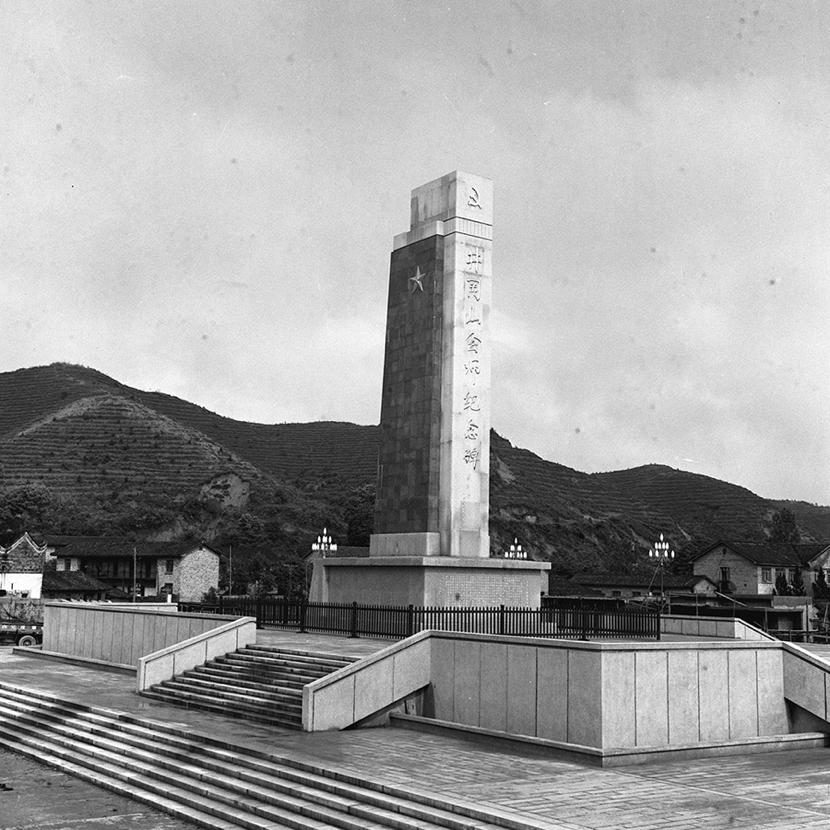
Mao Zedong's autumn income force also had the blood of the "Iron Army", which was Lu Deming.
Lu Deming was the second graduate of the Huangpu Military Academy. When Ye Ting had the independent regiment, he served as the head of the 4 again and again. After the independent regiment was adapted into 73 regiments, he was the chief of staff of the regiment with his outstanding performance in the Northern Expedition. When the National Revolutionary Army's second aspect of the army was established, Lu Deming Rong was promoted to the head of the Guard Regiment. During the Nanchang Uprising, Lu Deming led the 2000 warrior to the guards of the guards and lost contact with the uprising troops. Then he transferred to participate in the autumn uprising of the Hunan and Jiangxi borders led by Mao Zedong.
In the Autumn Harvest Uprising, Lu Deming served as the commander -in -chief. When the insurgents moved to Jinggangshan, they encountered the enemy in Luxi in Pingxiang. After Lu Deming personally broke, the main force of the main force retreated, and eventually sacrificed, only 22 years old. Chairman Mao led the remaining teams to Jinggangshan and established the first base in the land revolution war: Jinggangshan base area.
On December 11, 1927, under the leadership of Zhang Tailei, Ye Ting, Ying Daiying and others, the Guangzhou Uprising broke out. On the 12th, the Guangzhou Soviet government announced the establishment, and Su Zhaozheng was appointed as the chairman (not working due to illness, represented by Zhang Tailei), and Ye Ting served as commander -in -chief of the uprising army.
The Guangzhou Uprising shocked the reactionary forces of China and foreign countries. They dispatched artillery ships to bombard the urban area of Guangzhou and sent the Marine Corps to land in Changdi to attack my uprising troops. On the afternoon of the 12th, Zhang Tailei died, and the insurgents evacuated in Guangzhou, and the uprising failed. Since then, Ye Ting started his 10 -year exile overseas career.
The "three major uprising" of the Chinese Communist Party in the early days of founding the army: Nanchang Uprising, Autumn Harvest Uprising, Guangzhou Uprising, "Iron Army" soldiers have participated, and made outstanding contributions to the Chinese Communist Party's armed forces against the Kuomintang reactionaries.
3
At the moment of life and death, many times the birth path of birth
After Zhu De and Mao Zedong Jinggangshan, on April 28, 1928, the Special Committee of the CPC Xiangnan decided to compile the remaining fires left in the Nanchang Uprising and Autumn Harvest Uprising into the 4th Army of the Red Army of the Chinese Workers and Peasants. The original Ye Ting independent regiment was adapted into the 4th regiment of the 4th Army, becoming the main regiment of the Red Army.
At this time, Mao Zedong was actively practicing his thinking about building a new type of people's army. One day, he found Tang Tiancheng, a student of the fourth phase of the Huangpu Military Academy, and gave him two "magic weapons" - "the party branch was built in connection" and "three major discipline and six items", and let him go to the 28th regiment and 1 battalion. Party representative. After Tang Tianzhou arrived, in accordance with Mao Zedong's instructions, he established the party branch, Lenin room (club) and the military committee (military committee) to implement the political course education system.
"Three discipline and six attention" was warmly welcomed. The soldiers were written on the skin, on the bedside, and the door panel, and repeatedly recited it as a guide for action. Later, the "six attention" developed to the "eight attention".
In October 1947, Mao Zedong personally drafted the "Chinese People's Liberation Army Headquarters on Re -issuing Three Discipline and Eight Discipline Attention". Since then, the "three disciplines and eight attention" have become the code of conduct of the people's army strictly followed.
In 1929, the 28th Regiment also participated in the Gutian Conference to witness the great practice of our party to build a new type of people's army.
In 1932, after the fourth anti -"encirclement" battle, the 28th regiment was compiled as the Red Army 1 Army 2 Division and 4 regiments. On October 16, 1934, the avant -garde regiment of the entire army, the Red 4 regiment involved over the river, took the first step in strategic transfer. On this day, it also became a memorial day for the Central Red Army's 25,000 miles of Long March. In the Long March, the Red 4 regiment provoked the burden of "opening the road pioneer", forcing the Wujiang River, flying to the Luding Bridge, a strange attacker, climbing the snowy mountains, and crossing the grass.
In the Xiangjiang Campaign in the Long March, the Red 4 regiment first broke through the Xiangjiang River and occupied the important ferry Xue Mountain Panel. He made every effort to block the Hunan Army of the Kuomintang Xiangjun, which was swarmed, and made an important contribution to the Central Red Army's ultimately breakthrough in the Xiangjiang blockade.
On January 2, 1935, the Red 4th Regiment came to Yuqing County, Guiqing County, Guizhou Province. On the same day, the eight people led by Mao Zhenhua, the third Lianlian Mao Zhenhua failed. At night, the company once again organized 18 people to cross the river by bamboo. In the end, Mao Zhenhua led the four soldiers to cross the river, and the remaining bamboo rafts were rolled back.
At about 9 o'clock the next day, the Red 4 regiment launched a strong cross. The assault team consisting of the 1st, 2nd, and 3rd fighters of the 1st Battalion took a bamboo raft and rushed to the riverside enemy artillery fire, and moved forward. When the assault team was close to the North Shore, the five finger soldiers lurking under the cliff all night suddenly sent a side strike to the enemy and cooperated with the main force.
After the first company, the soldiers immediately pursued the enemy's position. They ran away more than 40 miles long distances, occupying the "former enemy command" of the Guizhou Army, laying the foundation for the victory of Wujiang battle. By January 6, the Central Red Army and the Military Commission column all passed the Wujiang River. In recognition of the outstanding record of the 1st Battalion of the Red 4th Regiment, the Red 1 Corps awarded the glorious title of the "Model Model Model".
Since then, the Red 4th Regiment participated in the battle of the Ashidu Chishui, and will attack Zunyi with other troops. After the Zunyi meeting, the Red 4 regiment moved to Yunnan. After Zhi Lu, Lu, and Wu Ding, and Yuanmou, they crossed the Jinsha River in Jiaoping and crossed the Liangshan minority settlements.
Dadu River in Luding County, Sichuan Province, the Red Army has seized the iron cable bridge here during the Long March of the Red Army and passed through the risk. Figure | Xinhua News Agency < /center>
On the way to western Sichuan, the Red Army met the Dashu River. The water of the Dadu River is high, the river is wide, and the river is wide. It is difficult to stand the bridge. At that time, the 40,000 horses of the Taiping Heavenly Kingdom Wing Shi Da Kai were besieged by the Qing army on the banks of the Dadu River. Chiang Kai -shek commanded the Kuomintang's regular army and the Kuomintang Sichuan warlord hundreds of thousands of troops to chase and chased, gathered to the Dadu River, claiming that "let the Communist Party be the second in Shipai."
On May 26, Mao Zedong, Zhou Enlai, and Zhu De arrived in Anshun Field. After listening to the report, they decided to let the Red Army go north along the west bank of the Dadu River to seize the Luding Bridge. The task of winning the bridge was issued to the Red 4th Regiment on the 28th. From the position marked on the map, the Red 4th Regiment was at 240 miles from Luding Bridge at this time, leaving them only one day and night.
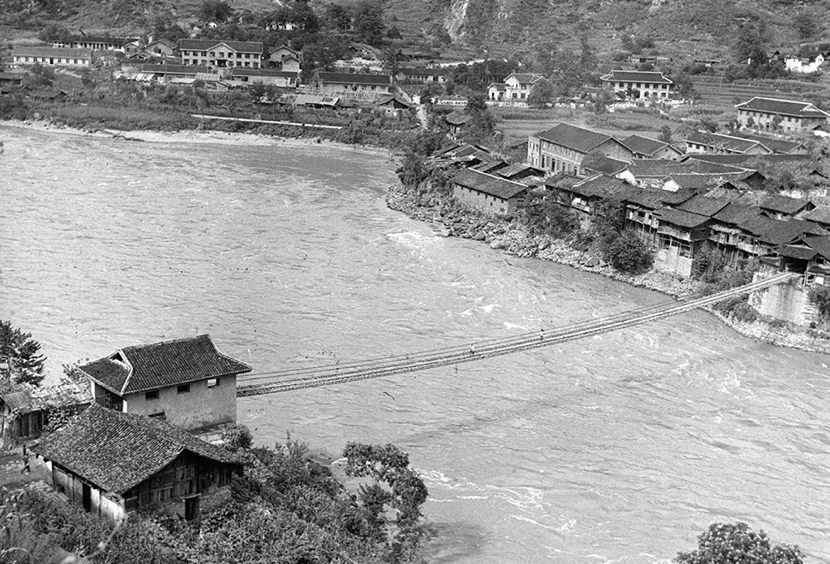
The red 4th regiment rushed along the mountain road and broke the barrier of the Chuankang border defense army in Tiger Gang. When he went to Kuiwu Village, the sky was raining, and the mountain road was muddy. In order to speed up the march, the head of the regiment Huang Kaixiang and the political member Yang Chengwu led the three infantry battalions to lightly move. They overcome difficulties and arrived at Luding Bridge at 6 am on the 29th, and ran 240 miles a day and night.
Wang Kaixiang and Yang Chengwu, who came to Luding Bridge, found that the 100 -meter -long and nearly 3 -meter -wide iron cable bridge had been removed from the bridge, and only 13 cold -shining iron chains were shaking on the turbulent river surface. The end of the bridge is Luding City. Half of the city is on Dongshan, and the city walls are about two feet high. The enemy of the bridge has built defense work on the side of the bridge and hillside on the other side of the bridge, and the muzzle and artillery mouth have long been aimed at the Luding Bridge.
If you want to enter the city, you must cross this bridge and you can only attack. At 4 pm on May 29, the total attack began.
Wang Kaixiang and Yang Chengwu stood on Qiaotou to command the battle. The deployment of the Red 4 Regiment is: to form a tightly covering net cover with two main battalions to prevent the enemy on both sides from reinforcement. The rest are divided into three echelons, positive assaults, and 22 assault players as pioneers.
When the team team composed of dozens of members in the whole group sounded the charge at the same time, all our weapons fired on the opposite side. The bullets scraped the enemy's position like a whirlwind. The mountain moves. At this time, 22 assault players held submachine guns, inserted horses, and tied dozens of grenades. Under the leadership of Captain Liao Dazhu, such as flying arrows away from the string, the bullets shot on the other side held the iron cable on the side of the bridge, stepped on The shaking iron cable rushed towards the enemy.
Behind the assault team is the three leader Wang Youcai. At this moment, he led a echelon consisting of 3 consecutive companies, carrying a gun with a gun, a wooden board under the armpit, holding the iron cable chain in one hand, and climbing the bridge.
Soon, the enemy's firepower was swallowed by the "Fire Dragon" of the Red 4 regiment. Just after they climbed the last quarter, they were almost close to the enemy's bridge head, and Xichengmen suddenly burned a fire.
It turned out that this was the enemy to prevent the Red Army from entering the city, concentrated the wooden boards drawn down the bridge outside the city, and then poured kerosene and used fire to block the Red Army.
"What's going on?" The assault players rushed to the enemy bridge head stared at the sudden flames of the moment, and suddenly stunned.
At this time, Yang Chengwu stood up at the bridge and shouted: "Comrades, this is the last moment of victory, take out your bravery and rush over! No fear of fire! Rush! The enemy is down! Chong! "" Go forward! "Liao Dazhu suddenly jumped up and took the lead in rushing into the sea of fire. The hat on his head was on fire, his clothes were on fire, and he still rushed into the fire. Another assault player rushed over and was the Miao soldier who entered from Guizhou.
The soldiers rushed into the sea of fire, waving a flashing horse knife, and killed the enemy.
"Comrades, rush!" Yang Chengwu suddenly rose from the bridge head, with 3 companies on the back of the 22 warriors while spreading the bridge and rushing towards the east of the bridge. After the three consecutive consecutive, the head of Wang Kaixiang led the second echelon to the bridge head like a tide.
The fierce lane battle table tennis ping -pong played for two hours, annihilating most of the enemy, and the remaining scattered soldiers fled to the north. When the trembling Dadu River reflects the first round of bright moon, the Red 4 regiment has occupied Luding City. Consume the number of people, 3 people in the assault team.
At the critical juncture of the Chinese revolution, Yang Chengwu and Wang Kaixiang led the Red 4 regiment to kill the Red Army.
On the third day of the Shanghai Dingqiao, the main force of the legion arrived. Mao Zedong carefully looked at the terrain of Luding Bridge, and said with emotion: "This bridge on the bridge can be captured, indicating that the Red Army cannot be defeated!"
On the 4th day, the Red Army's thousands of horses across the Shanghai Dingqiao crossing the sky.
Chief of Staff Liu Bocheng also came to Luding Bridge. He walked to the bridge and stomped a few feet and said, "You should erected a monument here! Remember our soldiers' immortal merits!" The Jiebao and comments proudly spread the heroes of the Red 4 regiment to the Luding Bridge and the heroic deeds of 240 miles a day and night.
In the Long March, the Red 4th Regiment played a key role in breaking through the Xiangjiang River, crossing Wujiang, and strong crossing the Dadu River. Grade.
4
"Liu Laozhuanglian", the highest expression of heroism
After the Long March arrived in northern Shaanxi, the Red 4th Regiment participated in the battle and other campaigns. After the Xi'an Incident, the Red Army was adapted into the Eighth Route Army of the National Revolutionary Army. The Red 4th Regiment was adapted to the 685th Regiment and 1 Battalion of the 343th Brigade of the 115th Division.
In 1938, the 685th regiment of the Eighth Route Army moved to Shandong with the main force of the 115 division and entered the Weishan Lake area of Shandong. In the future, the Su Lu detachment was adapted into the 5th Column of the Eighth Route Army, and Huang Kecheng served as commander and political commissar. After the "South Anhui Incident", the 5th column was placed at the leadership of the New Fourth Army and changed to the 7th Brigade of the 3rd Division of the New Fourth Army.
7 brigades entered Su Lu Yu, went south to China, and entered Huaihai in the east. Among them, the most fierce battle occurred in Liu Laozhuang in early 1943.
Liu Laozhuang is an ordinary village on the northern Jiangsu Plain, with a population of less than 100 households. It is 25 kilometers from Huaiyin City and about 10 kilometers away from the Liutang River. At that time, the superiors decided to launch a blockbuster fighting battle on the front line of Liu Laozhuang, delaying the enemy's offensive time, and covering the safety transfer of the party, government and military leaders and local people of the Huaihai District.
This combat task was handed over to the 19th Regiment of the 3rd Fourth Army Division and 7 Brigade.
This blocking war started at 9 am on March 18 and continued until about 21:00 that day. The history of "The History of the New Fourth Army" and the "Ye Ting Independence Regiment" records: "4 consecutive consecutive retreats of more than 1,000 charge of the Japanese pseudo -army army have been charged for 6 hours. , Injured more than 200 people. Due to the stubborn obstruction of 4 consecutive companies, the Japanese army was blocked by more than ten miles south of the Liutang River, ensuring the safety transfer of party and government and military leaders and the people on both sides of the Liutang River. "
However, all 82 teams of this company referred to the country.
After the battle, the district team and guerrilla team in Zhangji District, Huaiyin County rushed to the battlefield. The scene in front of them made them burst into tears: in the trenches that were staggered, the soil had been soaked into blood red. A corpse wearing a gray military uniform fell into the soil and blood. They still maintain the posture of fighting during their lifetime: some people, still biting the half -ears of the Japanese army in their mouths; some people still hold the enemy's hair in their hands; The bayonet that was bent ...
Zhu De, chief commander of the Eighth Route Army, highly commented: "Liu Laozhuang's battle for all 82 people in Huaibei ... All are the highest performance of our army's heroine heroism."
In order to promote the patriotic spirit of 82 martyrs who are not afraid of sacrifice and donate to the country, the spirit of loyalty and fearlessness, and the bloody battle to the end, the 19th regiment is named "Liu Laozhuang". People built martyrs 'cemetery in the place where the martyrs donated, and the majestic eighty -two martyrs' tombstones were built.
After the victory of the War of Resistance Against Japan, the 7th Brigade of the 3rd Division of the New Fourth Army went to the northeast. After the outbreak of the Liberation War, it was adapted to the 46th Regiment of the 16th Division of the 6th Column of the Northeast Pakatan Rakyard. After the establishment of the Northeast Field Army, it was renamed the 46th Division of the 6th Division of the 6th Wars. During the meantime, it was derived several times. The latter was the 379th regiment of the 43rd Army of the Fourth Field Army. With the south of the four fields, the local station was resident after the Guangzhou Military Region was established. In January 1949, according to the unified deployment of the central government, the number was changed to the 379th regiment of the 43rd Army of the Chinese People's Liberation Army. From the Songhua River in the northeast, to the Wanquan River in Hainan, it was eight thousand miles in the south, sweeping the thousands of troops such as the scroll, and the former "Ye Ting Independent Regiment" drove the Japanese invaders and liberated the whole China.
5
Always forever, and later people continue to glory
After the founding of the People's Republic of China, no matter how the establishment of our army's system has changed, the 127 divisions of the "Iron Army" gene have been retained in a system. It is always the key construction troops of the PLA and the main force of the army. The new generation of "Iron Army" has carried forward the fine tradition of "Ye Ting's Independence", adding a new glory to the "Iron Army".
On September 3, 2016, the officers and soldiers of Ye Ting's independent regiment were conducting emergency drills. Figure | Xinhua News Agency
In April 1950, the 379th Regiment of the 127th Division participated in the battle to liberate Hainan Island and was in the following year to defend Hainan Island to guard the South Gate of the Motherland.
In 1960, the 379th Regiment of the 127th Division was changed to the Guangzhou Military Region Independent Division directly under the jurisdiction of the Guangzhou Military Region. In August 1961, the 43rd Army canceled the number.
In September 1968, the Central Military Commission re -established the 43rd Army and the 127th Division adapted by the Division of the Guangzhou Military Region to return to the 43rd Army to prevent Guangxi Guilin.
In 1963, the Central Military Commission "Point General" 127 Division undertake the heavy responsibility of the war -on -duty division.
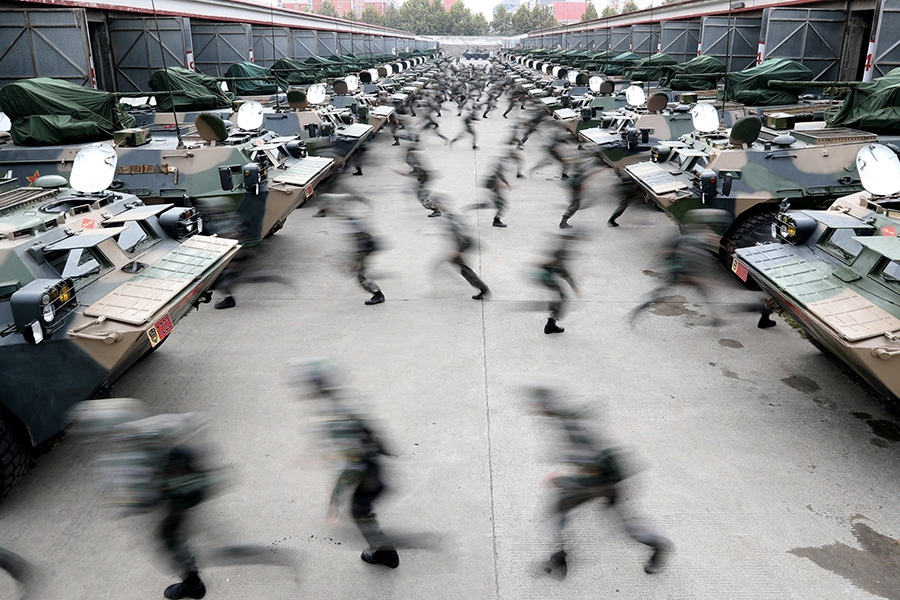
In October 1969, the 127th Division of the 43rd Army transferred Luoyang, entered the Wuhan Military Region sequence, and was included in the strategic reserve team of the entire army, becoming the key construction object of the Wuhan Military Region.
From February 17th to March 16th, 1979, the 127th Division of the 43rd Army participated in the self -defense counterattack against Vietnam, and continued to write the "Iron Army".
In August 1985, after the 127th Division of the 43rd Army of the Wuhan Military Region was adapted to the 127th Division of the 54th Army of the Jinan Military Region, it was adapted from the Motorized Infantry Division as a motorized infantry division and was compiled for the A Motor Board Division. In June 1997, the 127th Division was adapted from a motorized infantry division to a light mechanized infantry division.
In 2008, the 127th Division participated in the Wenchuan earthquake relief, and the "Model Crossing Wujiang Model" was used as a advanced team. Half of them, they were blocked by a landslide. On the top of their heads were crumbling boulder, and the feet were the turbulent Minjiang River. What should I do? The then commander Zhong Chao shouted "Come with me" and took the lead in exploring the stone. The soldiers followed the dangerous area and rushed to the earthquake area first.
In 2013, the 127th Division's artillery camp was replaced with a new type of howitzer, and the officers and soldiers rejoiced for a while. After the installation, they stated to the leaders of the regiment: fast, ensure that the combat effectiveness was formed that year!
Faced with such "ambition", the leaders of the regiment were a little worried, but it turned out that the artillery camp was believed. They respect the rules of training and train strictly in accordance with the training outline and standard procedures. The officers and soldiers were solid and strictly trained. In a exercise held the following year, the new type of the artillery battalion hit and fired in the first place.
In April 2017, the 127th Division of the 54th Army of the Jinan Military Region was reduced to the 127th Brigade of the 82nd Army of the Central Theater- "Iron Army Brigade".
In 2018, the "Iron Military" officers and soldiers appeared in the international military competition to win the top three individuals in the "light weapon shooting competition" and achieved 4 project championships including light weapon shooting and combat physical fitness.
For the first time, the army was involved in foreign military exercises, with their figures; the first Sino -Russian joint military exercise, they charge ahead; China's first peacekeeping infantry camp, selected formed in them ...
The 70th anniversary parade of the National Day in 2019, the officers and soldiers of the "Iron Army" were gloriously reviewed. The army was envious.
Today, in the History Museum of the 82nd Army "Iron Army", there is a inscription on the tombstone of the martyrs of the Northern Expedition. Four large characters are written above: spiritual immortality. After nearly a century, the spirit of the "Iron Army" has been engraved in the genes of our army.
Uncle Ku's book is always there! The Blue Lion Book provides Uncle Ku with 25 "Growth Difficulties: How Mature Enterprises Realize Sustainable Growth" to enthusiastic readers. How can a company with a stable business be re -to obtain the innovative vitality of startups, has the investment eye power of venture capital institutions, and finally internalize growth into a stable and lasting organizational ability? Opportunities do not happen out of thin air, but can be captured and grasped through systematic methods. This book will tell a systematic method that stimulates revolutionary growth from the enterprise. Please comment under the article that the top 3 (more than 30) who likes the highest likes will get a book.

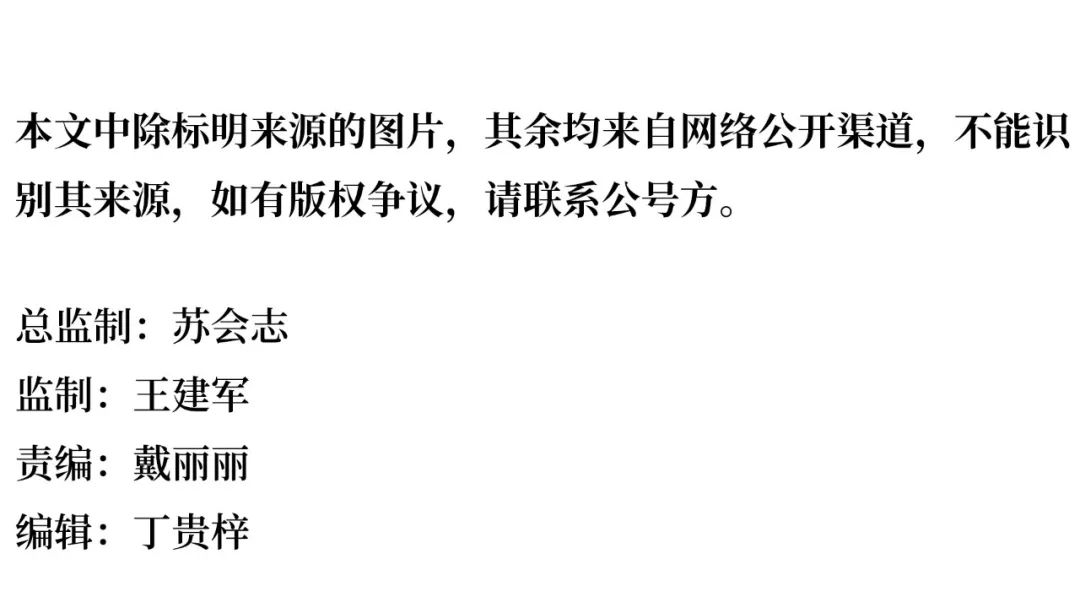
- END -
Ping Zhiwei: I am looking at the talents
[Revolutionary soldiers in the most beautiful new era]In 35 years, he worked hard and studied the theory of combat theory and made suggestions for the preparation of war. He deeply cultivated in a thr
[Reminder] Fast!quick!quick!As of 6 o'clock tomorrow night

In the second half of 2022Female soldiers apply for registrationCountdownThe regis...